Yoshiwara Entertainment District Tokyo 吉原
Yoshiwara entertainment district, located in what is now Senzoku 4-chome in Taito-ku in north eastern Tokyo, is what remains of the famous Edo Period pleasure quarter (yukaku).
Nowadays, Yoshiwara entertainment district is still in the business of offering sexual services at over 100 soaplands in the district.
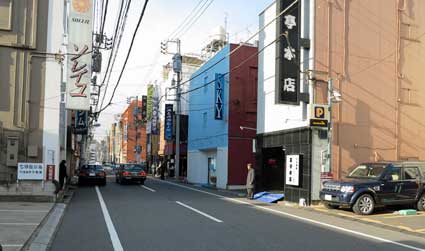
Yoshiwara History
Yoshiwara was first located in Nihonbashi near the start of the Tokaido highway (東海道) which ran from Edo to Kyoto.
Yoshiwara was established in around 1617 when all the brothels in the capital were moved to the site near Nihonbashi on the orders of the second Tokugawa shogun Tokugawa Hidetada (1579-1632), so that the Tokugawa regime could better control them. Similar licensed quarters were also established at Shimabara in Kyoto and Shinmachi in Osaka.
After the Meireki Fire of 1657, which burnt much of old Edo, Yoshiwara was moved to its present location, north of Asakusa and renamed Shin-Yoshiwara (New Yoshiwara), though the “Shin” part did not stick and the area was just known as “Yoshiwara.” The original area of lakes and marshland was drained to create the space for the pleasure quarter and the streets were laid out in a grid pattern and the area surrounded by walls and a moat, to stop the women from escaping before their indentures were paid off.
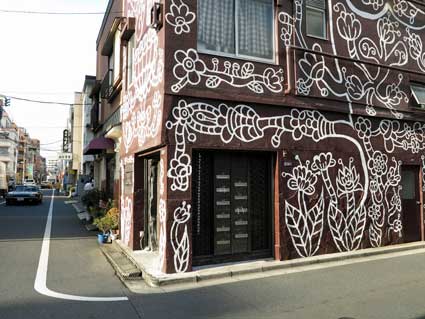
Numbers are difficult to estimate but it is believed from 2,000-3,000 women worked here in various roles: as the cooks, maids and servants of the courtesans and as prostitutes themselves during the 200 years of Yoshiwara’s existence in the Edo Period.
By 1900, it is thought there were 9,000 prostitutes in Yoshiwara, the majority of them employed in the lowest of the three classes of the over 120 brothels here — ko-mise, with only a handful employed at the second (naka-mise) and first class (o-mise) establishments. The lower class prostitutes were often kept behind wooden slatted windows or harimise, like birds in a cage. This practice only ceased in 1916.
Life for the Women in Yoshiwara
Young girls were often indentured by poverty-stricken parents to the brothels in Yoshiwara as apprentice maids from ages as young as 10. Life for the women in the lowest class of brothels could be brutal and short, whereas the oiran and tayu (top courtesans) in the highest class establishments were the celebrities of their day and practiced in Japanese arts including the tea ceremony, calligraphy, ikebana, playing musical instruments and dance. The most famous tayu can be seen in Edo-era prints parading around in platform geta and sporting incredible hairstyles and hair ornaments.
Introductions to the oiran, tayu and other higher-ranked prostitutes were often made by hikitejaya — tea houses staffed by young maid servants and a madam, who acted as go-betweens for the client and the courtesan. Client’s bills were paid directly to the hikitejaya, who then paid the courtesan.
Yoshiwara was a thriving “city with a city” and was open to all social classes including the samurai, who were forced to leave their weapons at the single entrance gate to prevent any brawling within.
Prostitution was not officially made illegal in Japan until 1958 and the old ways of Yoshiwara came to an end. Nowadays men wearing surgical masks are driven in vans to the various soaplands where prices range up from 20,000 yen ($200) to 50,000 ($500) yen for around two hours of entertainment. Some establishments welcome foreign clients, though by no means all.
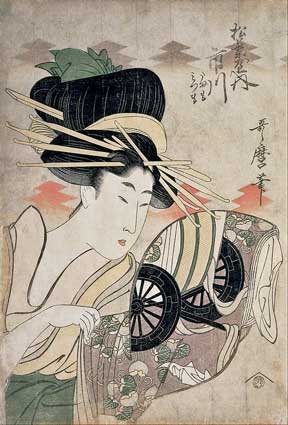
Yoshiwara & Ukiyo-e
Yoshiwara was celebrated by many ukiyo-e wood-block print artists who captured the fashions of the “Floating World.” It was through these prints that the couture of the courtesans spread out among the general populace.
Artists who depicted courtesans from the three main pleasure quarters of Yoshiwara, Shinmachi and Shimabara included Nishikawa Sukenobu (1671–1750), Kitagawa Utamaro (1753-1806) and Torii Kiyonaga (1752-1815).
Erotic wood-block prints, known as shunga, though they have their roots much earlier in the Heian Period, were also influenced at the time by the goings-on in the licensed pleasure quarters of the Edo Period.
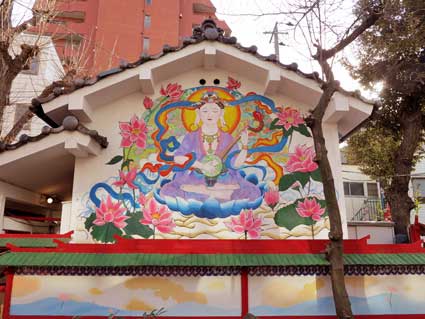
Yoshiwara Entertainment District Shrines
Present-day Yoshiwara retains its grid-pattern streets and a couple of shrines are still in existence from the 17th century.
Yoshiwara Benzaiten is a small shrine dedicated to Benzaiten, one of the Seven Lucky Gods, who is a goddess of music and art and is the only female member of the group, usually depicted carrying a lute (biwa). It seems entirely appropriate that Benzaiten is associated with Yoshiwara! The shrine contains a small lake, which remained after the area was drained to make way for the pleasure quarter.
After the Great Tokyo Earthquake of 1923 many people fled here to take shelter from the subsequent fires and over 400 perished in the area and the statue of Avalokitesvara (Kannon) was erected in 1926 in their memory.
Yoshiwara Benzaiten also has a stone monument to the Floating World of the old Yoshiwara.
Nearby Yoshiwara Shrine (Tel: 03 3872 5966) was where the courtesans would pray for protection, especially from STDs, which carried off so many of their sisters.
Near Minowa Station is Jyokanji Temple (Tel: 03 3801 6870) where over 20,000 women from Yoshiwara were buried in paupers graves.
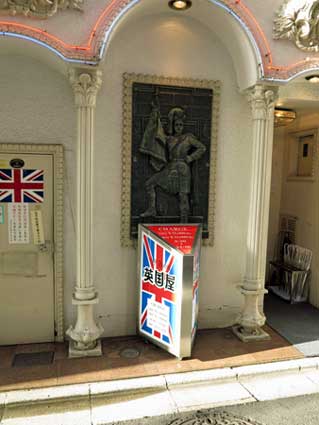
Yoshiwara Festival
The Edo Shinyoshiwara Oiran Dochu (江戸吉原おいらん道中) is a spectacular historical procession held in Senzoku on the second Saturday in April. It is part of the Ichiyo Sakura Festival that takes place around nearby Sensoji Temple. Participants costumed in the colorful garb of the Edo era parade through the streets in a celebration of both history and springtime.
Yoshiwara Entertainment District Access
Yoshiwara is now Senzoku 4-chome in Taito-ku located a 15-20 walk from Minowa subway station on the Hibiya Line of Tokyo subway.
Quirky Tokyo Festivals
Fuchu Prison Culture Festival
Tokyo Detention House Festival
Tokyo Map
Yoshiwara Video
Book Hotel Accommodation in Japan Near Yoshiwara Entertainment District
Hotels in Japan – Booking.com
Hotels in Tokyo – Booking.com
Hotels in Nagano – Booking.com
Hotels in Sendai – Booking.com
Hotels in Japan – Agoda
Hotels in Sendai – Agoda
Hotels in Shimane – Agoda
Hotels in Yamaguchi – Agoda
Hostels in Japan – Booking.com